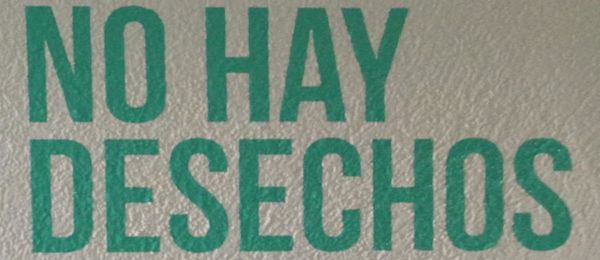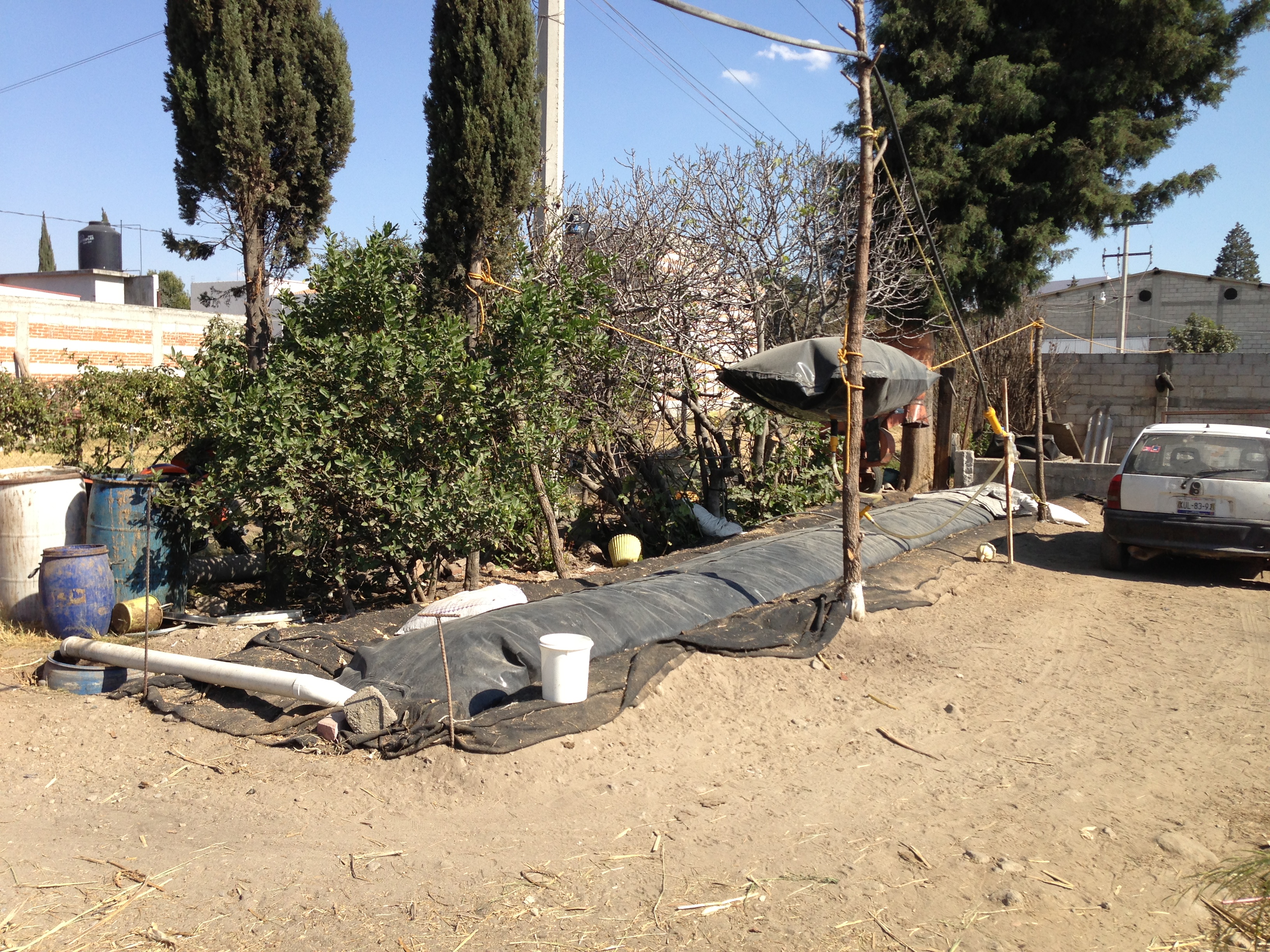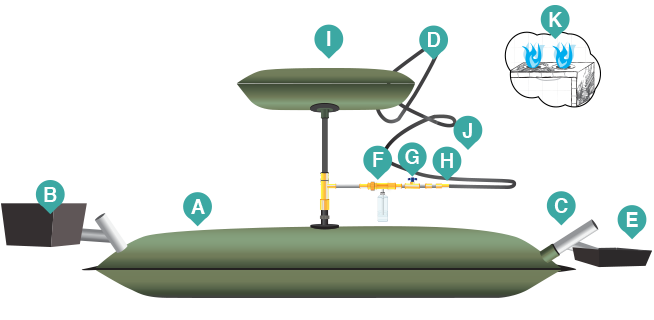

"No hay desechos, solo recursos" - Sistema Biobolsa slogan
We’ve all seen it, smelled it, or stepped in it, though we go to great lengths to avoid it. It was responsible for catalyzing some of the worst epidemics in human history, when we couldn't properly manage or dispose of it. It is not a polite topic of conversation, and its name takes the form of a profane interjection in most languages.
It is a resource as ancient as the practice of animal husbandry itself, but one that, until recently, had not been appreciated for what it is: a commodity with the power to transform the energy economics of small farms and households.
We are talking about the very least glamourous thing in the world. We are talking about manure.
To say the least, it's a surpising phenomenon. How can it be?
It took some serious outside-the-box thinking to get here. Looking in the unlikeliest place of all, the team at Sistema Biobolsa, with whom I've spent the past two months, found the key to unlocking a sustainable counterbalance to the array of tightening economic pressures confronting the small farmers they serve.
The Problem
Small farmers have always been vulnerable to market forces and environmental swings that are largely out of their control. John F. Kennedy's observation that "the farmer is the only man in our economy who buys everything at retail, sells everything at wholesale, and pays the freight both ways" applies here as elsewhere, and over the past decade, rising prices for intermediate inputs like commercial fertilizer are squeezing small farmers more than ever.
The magnitude of the increases is clear in data collected by the Food and Agriculture Organization of the U.N., below. Though chart below shows 2007-11 prices for Urea, DAP, and MOP (three of the most common kinds of fertilizer nutrients) relative to 2002-2004 prices, which are normalized to 100. As of 2011, real prices had increased steadily, except for a brief respite during the 2008-09 global economic crisis, to around three times the prices of not quite a decade ago:
And it appears that it will continue. The FAO predicts that by 2015, global consumption of commercial fertilzer will have increased by ~8% over 2011, driving prices up even further.
The growing difficulties for Mexican farmers with smallholdings don't end there. Many of them rely on propane and, increasingly, firewood to heat their water and power their kitchens, and these commodities are also getting more expensive every day. Propane prices, for example, increased at more than twice the rate of Mexican inflation from 2012 to 2013 in regions Biobolsa serves (Pemex, Gas LP Prices, 2012-13). Neópolo, a farmer in Tlaxcala who was buying a tank every 20 days, tells me this trend is nothing new: "the price goes up every two months, now going back six or seven years. Already this year, we've seen three price increases - so it's not even every two months anymore. There's no telling how high it will go."
The costs are not just material. As rural consumers substitute firewood for propane, they expose their families to indoor air contamination. Neópolo explains that while using firewood offers a savings, "it has its repercussions. Later you see all the illnesses coming from smoke inhalation, which we see from those who used to use it a lot. They're suffering from illnesses of the lung, cancer in the blood, from the smoke. You have to use it sparingly. Smoke also bothers the eyes - in the long run there's a big cost that goes with the savings."
The old ways of doing things, the supply chains and market conditions that enabled their parents and grandparents to work for themselves on their own land, to be entrepreneurs in the purest and oldest sense of the word, are not guaranteed to last. As one man told me, "we have hands, we have heart, we have the know-how. We need resources".
A Solution
Enter the biodigester.

The genius of the biodigester is that takes an input that farmers have a lot of, and would usually be inclined to make disappear as quickly as possible (animal waste), and outputs precious, expensive resources essential to their way of life (energy and fertilizer).
Here's how it works, in broad strokes: fresh manure is mixed with water and deposited into the organic waste inlet (B in the diagram below). At every point, water traps prevent odors from escaping the system, so it also represents a sanitary alternative to conventional methods for disposing of livestock waste. The solution passes into the reactor (A) where the process of anaerobic (without oxygen) digestion begins. Bacteria breaks down the animal waste into biogases that are stored in the biogas reservoir (I) before going through the biogas management system (F, G, H). Now, the biogas can be used for household energy purposes, in boilers, kitchens and generators.
Meanwhile, the liquid remains of the waste matter output into the container (E) as biol, high-quality liquid organic fertilizer.
 Image courtesy of Sistema Biobolsa (http://sistemabiobolsa.com/what-we-do/the-technology/)
Image courtesy of Sistema Biobolsa (http://sistemabiobolsa.com/what-we-do/the-technology/)Biodigesters have been around for a long time, but have typically been designed and manufactured at industrial scale, often in concrete dome models, and installation is usually burdensome and expensive.
Alex Eaton, Sistema Biobolsa's founder and the designer of its low-cost, user-friendly continuous-flow systems, realized the technology could be reimagined in a way that would address the pressures faced by small farmers in Mexico. "It's a biodigester, which has existed in lots of different forms, but this is the first modular, pre-fabricated system," he says, "What we've done is tried to design something that's very robust and durable so that it can adapt to the Mexican countryside....One of the benefits of our design is that they come in lots of different shapes and sizes so they can adapt to a lot of different farms."
Sistema Biobolsa biodigesters can take anywhere from 45 minutes to three hours to install depending on the size of the biodigester and the conditions of the site, and technicians follow up regularly in the first months after installation to ensure customers feel comfortable operating the systems to their full potential. The team also makes regular client service calls long thereafter to monitor the performance of the biodigesters and guarantee they are achieving the desired outcomes.
The savings generated are huge. Neópolo estimates his propane consumption is down 50% in the five months since he purchased (with Kiva financing) an 8-cubic meter Sistema Biobolsa biodigester. "For a household of 4 or 5 people, the biodigester provides all the energy we need for kitchen use," he told me. "I think for a bit smaller family, maybe 3 or 4 people, there would also be enough to power a boiler and heat water, if not every day then every other day. But for cooking three square meals a day, there's enough gas. And there's some left over."
The biogases can power Neópolo's stovetop for five hours at full strength before they start to run out, and replenish in 24 hours on the rare occasion they're fully exhausted. He's strongly considering purchasing another biodigester or upgrading to a larger size (he is still not using all the manure his animals produce), to power a boiler or to heat a greenhouse in the winter months.
Efrén, another Sistema Biobolsa customer who got financing from Kiva lenders, is based in the state of Puebla and has had his biodigester for about a year. Having had the opportunity to test the biol, he was exuberant about the result, with savings from diminished fertilizer consumption that are even more impressive than the reduction in energy costs. Watch as he elaborates on the pre- and post-biodigester experiences:
No hay desechos...
Alex, Neópolo, Efrén and Kiva lenders supporting the efforts of Sistema Biobolsa and its clients are all on the front lines of what can become a revolution in the way we think about "waste".
The word itself implies something useless. It's what is left when all the utility has been extracted. It's something to be discarded and forgotten.
In at least one case though, and probably in many, many others, the concept of waste only serves to describe something in which we, over the centuries, have just not been creative enough to see the value. Innovation doesn't always have to be about making something brand new appear out of thin air - it can also be about using something old to solve old problems, simply by looking at that old thing in a new way.
By looking hard enough, by digging deep enough, we may find....there is no waste. There are only resources.
PREVIOUS ARTICLE
Week in Review: How you can keep Nutrition Month rolling with Kiva →NEXT ARTICLE
On the Road in Kenya →













